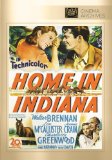| Reviews & Columns |
|
Reviews DVD TV on DVD Blu-ray 4K UHD International DVDs In Theaters Reviews by Studio Video Games Features Collector Series DVDs Easter Egg Database Interviews DVD Talk Radio Feature Articles Columns Anime Talk DVD Savant Horror DVDs The M.O.D. Squad Art House HD Talk Silent DVD
|
DVD Talk Forum |
|
|
| Resources |
|
DVD Price Search Customer Service #'s RCE Info Links |
|
Columns
|
|
|
Home In Indiana (Fox Cinema Archives)
"The county fair. As American as America itself."
Charming, lovely bit of Americana. 20th Century-Fox's Cinema Archives line of hard-to-find cult and library titles has released Home in Indiana, the 1944 "boy and his horse" drama from Fox, directed by Henry Hathaway, scripted by Winston Miller (based on George Agnew Chamberlain's Saturday Evening Post short story, The Phantom Filly), and starring Walter Brennan, Charlotte Greenwood, Ward Bond, Charles Dingle, George Reed, Willie Best, and "introducing" the movie's young leads: Lon McCallister, Jeanne Crain, and June Haver. Part coming-of-age movie, sports story, animal picture, teen romance, and bucolic family drama, Home in Indiana is a disarming, irresistibly appealing story set among the powerful, swift trotters and their drivers and sulkys who raced around the dusty Midwestern tracks of hundreds of summer and fall county fairs. Unashamedly heartwarming and sentimental (and wholesomely sexy, too, with young Crain and Haver having fun at the 'ol swimmin' hole), Home in Indiana is a winner by a length and then some. Pity, then, about that less-than-ideal color transfer....
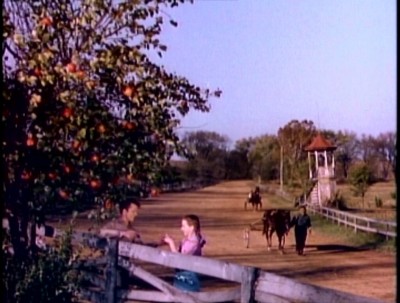
The broken-down, overgrown Roundhouse Farm & Stables of Low Meadow, Indiana. Its owner, former champion sulky rider and one-time premiere horse-breeder J.F. "Thunder" Bolt (Walter Brennan), doesn't seem too happy to get that Connecticut sheriff's letter that heralds the arrival of his recently-orphaned nephew, "Sparke" Thornton (Lon McCallister). But then, nothing has made the frequently drunk Thunder happy in over 18 years, when he was ruined by his former partner and neighboring horse breeder, Godaw Boole (Charles Dingle). Now, nothing remains of the Roundhouse's former glory except Lady, a champion mare now totally blind, cared for by crusty, expert handler and trainer Tuppy (George Reed, wonderful here). Thunder's wife, Penny (Charlotte Greenwood), is happy to see the boy, though, despite his reputation as a trouble maker--a rep he no doubt would carry on into Indiana had Penny and Thunder discovered that the minute he set foot in his new bedroom, he escaped out the back window, intent on running away. Seeing Boole's swanky operation, Sparke watches "Char" Bruce (Jeanne Crain), the daughter of Boole's trainer, Jed Bruce (Ward Bond), whip around the Boole track, her gorgeous red hair flying in the wind. Caught snooping by Tuppy, Sparke forms a bond with the seemingly cranky trainer when he meets the sad, neglected Lady, whose plight reminds Sparke of his own grief at loosing his horse when he was forced to leave Connecticut.
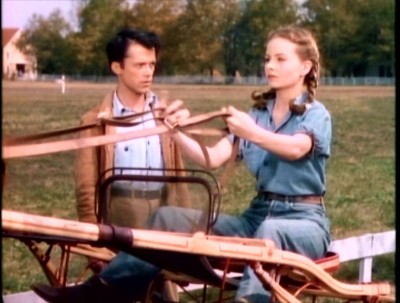
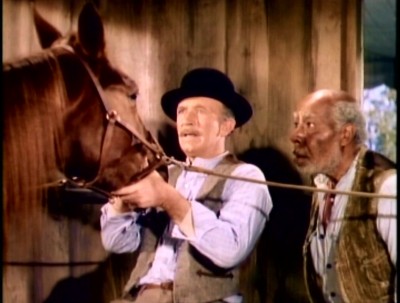
Skipping school the next day, he goes over to the Booles again, this time cutting through mean, menacing stallion Hamilcar Chief's stall unharmed--a feat that earns him a chance to ride around the track in lieu of a job interview. Unfortunately, Sparke doesn't have the training for sulky driving, but his sincere, apologetic nature touches both Jed and Char...as well as Boole's rich, spoiled, hot daughter, "Cri Cri" Boole (June Haver). Tuppy shows Sparke how to get the "hands" needed to guide a winner, and soon enough, he's working at the Booles, becoming friends with adoring Char and stable boy Mo (Willie Best), while pining after flirty, fickle Cri-Cri. When Sparke finally learns about Thunder's downfall, and how the racing bug still has him, he's moved to help: he takes Lady over for a midnight stroll at stud Hamilcar Chief's. Now all Sparke needs is Mo's and Char's help to scam a properly signed-off stud fee permit from Boole, proving Lady's impending foal's paternity. When Maudeen is born, Sparke has a mission: to eventually enter a big stake race at the county fair to win enough money to get Thunder and Roundhouse back on their feet. Even more pressing: Sparke has to figure out which admiring girl is for him.
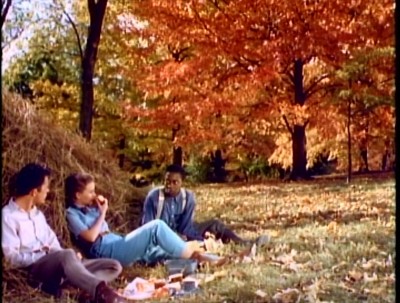
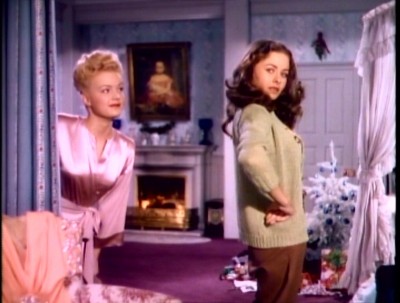
Having grown up in a (once) semi-rural area of Ohio, I can attest to Home in Indiana's fidelity to capturing the admittedly more idyllic moments of life in such a place: the seemingly endless fields and woods to wander, with their promise of adventure (and innocent romance), the hot, dry summer days relieved by a dip in a cool pond, the bursts of fall color, with apple trees waiting to be picked, and of course the highlight of the year--the county fair. It's not like that anymore where I grew up: no more woods or fields, no more wild apple trees or secret ponds, nor is the fair the same. Having lived right next door to my county's fairgrounds, I still remember the months-long anticipation of the fair's arrival, and the sounds of the crowds in the late summer night air, including the yells and cheers accompanying the harness races. That's all gone now; the last time I came home to visit it, ugly rap music blared from the garish mechanical rides, with tattoo stands and beer tents replacing the steam calliope, the pie baking contests, the 4H displays, and the horse races of my youth. A genuinely sentimental movie (in the best sense of that unfairly maligned word) like Home in Indiana will trigger such similar memories...if one was lucky enough to have those kinds of experiences growing up.
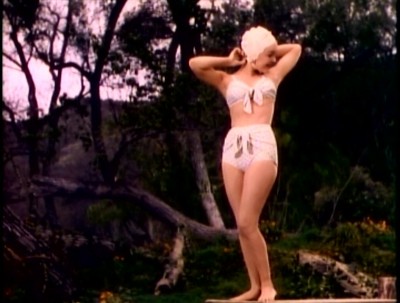
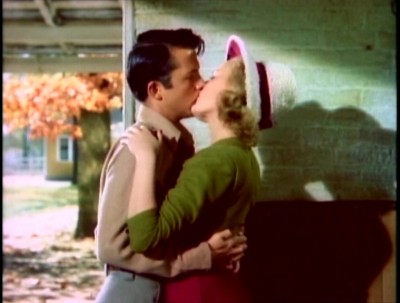
Admittedly, though...those kinds of childhood memories, at first recall, are usually highly selective in detail, and further burnished with soothing nostalgia, as certainly is the idealized drama in Home in Indiana (even though the movie's story appears to be set in 1943, there's a pre-war ambiance that suggests an almost, "This is the way it used to be" tone). However, such amelioration doesn't negate those memories' verities, nor Home in Indiana's sweetly-realized, essential truths. Scripted by Winston Miller (My Darling Clementine, Station West, Lucy Gallant), Home in Indiana was intended to be a non-sequel follow-up to two other successful Walter Brennan horse stories for Fox: 1938's Kentucky and 1940's Maryland. And while none of the dramatic elements here can claim to be at all original, that thoroughly familiar impression we sense only adds to the storybook feel of the piece. Directed with a surprisingly level of amiable sweetness by tough-guy helmer Henry Hathaway (The Lives of a Bengal Lancer, Kiss of Death, Call Northside 777, Niagara, True Grit), Home in Indiana's various subplots, from the potentially dark storyline of Thunder's drunkenness and wallowing self-pity, and wife Penny's sad, watchful vigil over him (his unfair whipping of Sparke is disturbing), to the genial fun of Mo's, Sparke's, and Char's scam to obtain papers for Maudeen (some touchy new viewers will automatically balk at the marvelously funny Willie Best's character here...forgetting he's the actual brains behind the scam), to the innocent (and unexpectedly sexy) fun of Sparke's initiation into the complicated maneuverings of young love, to the spirited, exciting horse races in the movie's final act (the dynamic trucking shots of the horses powering around the track are mesmerizing, before the heart-breaking sadness/triumph of Maudeen's last race), are all juggled with an even-tempered ease by pro Hathaway.
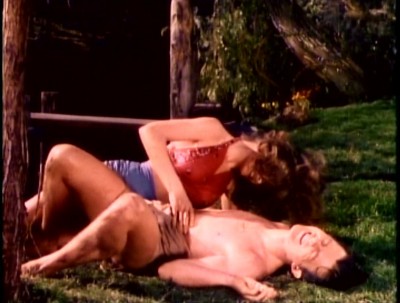
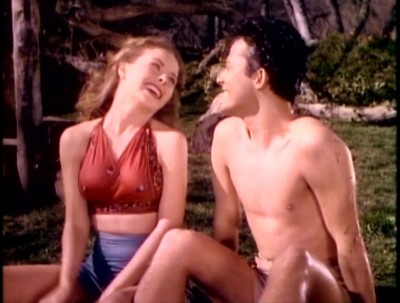
That ease is in service to Home in Indiana's most successful element: its quiet sensuality. Apparently, location shooting in Kentucky, Ohio--including the Sandusky County Fairgrounds in Fremont--and Indiana (with some California filler) was done for the movie, capturing in the best picture postcard aesthetic that rich, lush sense of overripe summer and fall in the Midwest. Hathaway's and Miller's playful-but-respectful approach to the movie's teen love triangle shows a similarly attuned feel for how these dynamics work out. Hathaway and Miller get quite a few gentle laughs out of the actual mechanics of naive McCallister's interactions with lovely Crain and Haver (the girls are already far smarter--and savvier--about these primal mating tactics, such as Haver's calculating little minx, teaching a too violent McCallister how to kiss...and roping him in), while Hathaway brings a palpable appreciation for the sheer corporeal pleasure of presenting his attractive cast (Hathaway blocks out a funny scene where tomboyish Crain first realizes how desirable she is as she poses in Haver's full-length mirror, admiring her full, lush body and how her hair falls...before the confident Haver laughs at her, perfectly illustrating the dynamics between the two competing girls). Later, Hathaway stages a rather remarkable pond-side wrestling match between an impossibly gorgeous, soaking wet Crain and McCallister (who doesn't look up to the task...), her beautiful hair falling over McCallister's chest as she pushes him down, tickling him, as McCallister tries hard not to stare at her straining--and revealing--halter top (Hathaway knew exactly what he was doing to the guys going crazy in the audience). He's even more overt with flashy, bombshell Haver, frequently putting her on display (to equally paralyzing effect as Crain) in two-piece bathing suits or jitterbugging in a skin-tight evening gown (no wonder Haver and Crain became stars overnight with this movie). And yet, though the more concrete erotic suggestions are necessarily subtextual (and at times even chaste, such as the lovely moment Crain and McCallister happily fall asleep together in a hay mound), Hathaway makes it clear that the young lovers' actions are as elemental and primal as the beautiful natural world that surrounds them. It's a heady combination: wholesome romance married to a powerful erotic undercurrent--just one of the many surprises in the seemingly simple yet multi-layered Home in Indiana.
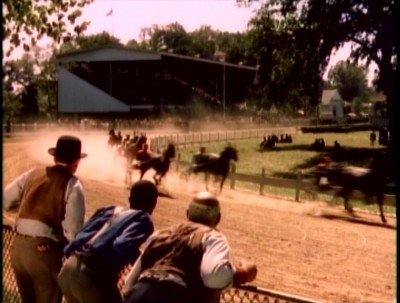
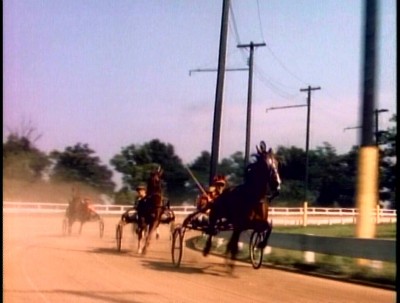
The DVD:
The Video:
Unfortunately, the fullscreen, 1.37:1 transfer for Home in Indiana is a pale imitation of its original Technicolor glory (I would imagine...). The image can be extremely soft at times, with the mudddy, sometimes faded, reddish color out of registration, and with lots of imperfections like dirt and scratches. A shame, particularly for a title that was Oscar-nominated for its cinematography.
The Audio:
The Dolby Digital English mono audio track has a moderate amount of hiss. No subtitles or closed-captions available.
The Extras:
No extras for Home in Indiana.
Final Thoughts:
Quiet, well-observed, delightful family drama. Director Henry Hathaway gets the atmosphere of heady, overripe (and sensual) Midwestern summer and fall just right in Home in Indiana, while getting gentle laughs from his young, frisky lovers, and excitement from those beautiful trotting horses in action. Unashamed, sentimental emotion (and a surprising amount of wholesome sex), expertly wrought. What a shame about that transfer, though.... Still, I'm highly, highly recommending Home in Indiana.
Paul Mavis is an internationally published movie and television historian, a member of the Online Film Critics Society, and the author of The Espionage Filmography.


|
| Popular Reviews |
| Sponsored Links |
|
|
| Sponsored Links |
|
|
| Release List | Reviews | Shop | Newsletter | Forum | DVD Giveaways | Blu-Ray | Advertise |
|
Copyright 2024 DVDTalk.com All Rights Reserved. Legal Info, Privacy Policy, Terms of Use,
Manage Preferences,
Your Privacy Choices | |||||||









